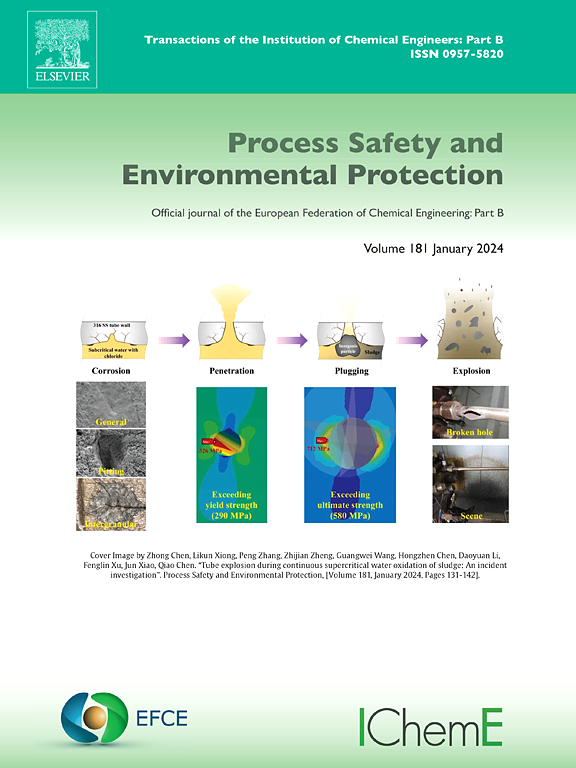Development of a novel eco-friendly depressant for the selective flotation of magnesite from dolomite: Investigation of Luteolin’s effectiveness and mechanism of action
IF 6.9
2区 环境科学与生态学
Q1 ENGINEERING, CHEMICAL
引用次数: 0
Abstract
Magnesite and dolomite exhibit similar crystal structures, chemical compositions, and surface properties, which pose significant challenges to their flotation separation. In response to the growing need for efficient and environmentally sustainable decalcification of magnesite, this study introduces luteolin (LUT), a novel eco-friendly depressant. The selective depression efficiency of LUT on dolomite within the magnesite flotation system was systematically assessed. Optimal flotation conditions (pH 11.0, LUT concentration of 60 mg/L, and NaOl concentration of 120 mg/L) resulted in a concentrate with 43.05 % MgO and 4.98 % CaO, effectively achieving the separation of magnesite from dolomite. The depression mechanism of LUT was thoroughly investigated through a combination of zeta potential, contact angle, FTIR, XPS, and AFM analyses. The results indicate that LUT’s hydroxyl groups preferentially adsorb onto the calcium sites of dolomite, preventing subsequent adsorption of sodium oleate, while exhibiting minimal interaction with magnesium sites on magnesite, thus preserving its flotation behavior. This study offers a promising, environmentally friendly solution for the selective separation of magnesite from dolomite.
求助全文
约1分钟内获得全文
求助全文
来源期刊

Process Safety and Environmental Protection
环境科学-工程:化工
CiteScore
11.40
自引率
15.40%
发文量
929
审稿时长
8.0 months
期刊介绍:
The Process Safety and Environmental Protection (PSEP) journal is a leading international publication that focuses on the publication of high-quality, original research papers in the field of engineering, specifically those related to the safety of industrial processes and environmental protection. The journal encourages submissions that present new developments in safety and environmental aspects, particularly those that show how research findings can be applied in process engineering design and practice.
PSEP is particularly interested in research that brings fresh perspectives to established engineering principles, identifies unsolved problems, or suggests directions for future research. The journal also values contributions that push the boundaries of traditional engineering and welcomes multidisciplinary papers.
PSEP's articles are abstracted and indexed by a range of databases and services, which helps to ensure that the journal's research is accessible and recognized in the academic and professional communities. These databases include ANTE, Chemical Abstracts, Chemical Hazards in Industry, Current Contents, Elsevier Engineering Information database, Pascal Francis, Web of Science, Scopus, Engineering Information Database EnCompass LIT (Elsevier), and INSPEC. This wide coverage facilitates the dissemination of the journal's content to a global audience interested in process safety and environmental engineering.
 求助内容:
求助内容: 应助结果提醒方式:
应助结果提醒方式:


